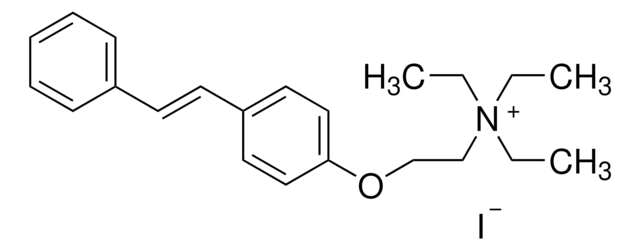M3148
2-Mercaptoethanol
for molecular biology, suitable for electrophoresis, suitable for cell culture, BioReagent, 99% (GC/titration)
Synonym(s):
β-Mercaptoethanol, 2-Hydroxyethylmercaptan, BME, Thioethylene glycol
About This Item
Recommended Products
grade
for molecular biology
Quality Level
vapor density
2.69 (vs air)
vapor pressure
1 mmHg ( 20 °C)
product line
BioReagent
Assay
99% (GC/titration)
form
liquid
expl. lim.
18 %
reaction suitability
reagent type: reductant
concentration
14.3 M (pure liquid)
technique(s)
cell culture | mammalian: suitable
electrophoresis: suitable
refractive index
n20/D 1.500 (lit.)
pH
4.5-6 (20 °C, 500 g/L)
bp
157 °C (lit.)
solubility
H2O: soluble 1 mL/mL
density
1.114 g/mL at 25 °C (lit.)
foreign activity
DNase, RNase, protease, none detected
storage temp.
2-8°C
SMILES string
OCCS
InChI
1S/C2H6OS/c3-1-2-4/h3-4H,1-2H2
InChI key
DGVVWUTYPXICAM-UHFFFAOYSA-N
Looking for similar products? Visit Product Comparison Guide
Application
β-mercaptoethanol or 2-mercaptoethanol has been used:
- as a supplement in Roswell Park Memorial Institute (RPMI)-1640 medium to culture DT40 cells (chicken B cell line)
- to lyse NuLi-1 (Normal Lung, University of Iowa-1) cells
- to trypsinize mouse embryonic stem cells
Signal Word
Danger
Hazard Statements
Precautionary Statements
Hazard Classifications
Acute Tox. 2 Dermal - Acute Tox. 3 Inhalation - Acute Tox. 3 Oral - Aquatic Acute 1 - Aquatic Chronic 2 - Eye Dam. 1 - Repr. 2 - Skin Irrit. 2 - Skin Sens. 1A - STOT RE 2 Oral
Target Organs
Liver,Heart
Storage Class Code
6.1A - Combustible acute toxic Cat. 1 and 2 / very toxic hazardous materials
WGK
WGK 3
Flash Point(F)
154.4 °F - closed cup
Flash Point(C)
68 °C - closed cup
Personal Protective Equipment
Certificates of Analysis (COA)
Search for Certificates of Analysis (COA) by entering the products Lot/Batch Number. Lot and Batch Numbers can be found on a product’s label following the words ‘Lot’ or ‘Batch’.
Already Own This Product?
Find documentation for the products that you have recently purchased in the Document Library.
Customers Also Viewed
Protocols
To standardize a procedure for the determination of the enzymatic assay of choloylglycine hydrolase.
Protocol Guide: XTT Assay for Cell Viability and Proliferation
This page shows and discusses three protocols for stripping and reprobing a western blot membrane.
Our team of scientists has experience in all areas of research including Life Science, Material Science, Chemical Synthesis, Chromatography, Analytical and many others.
Contact Technical Service









